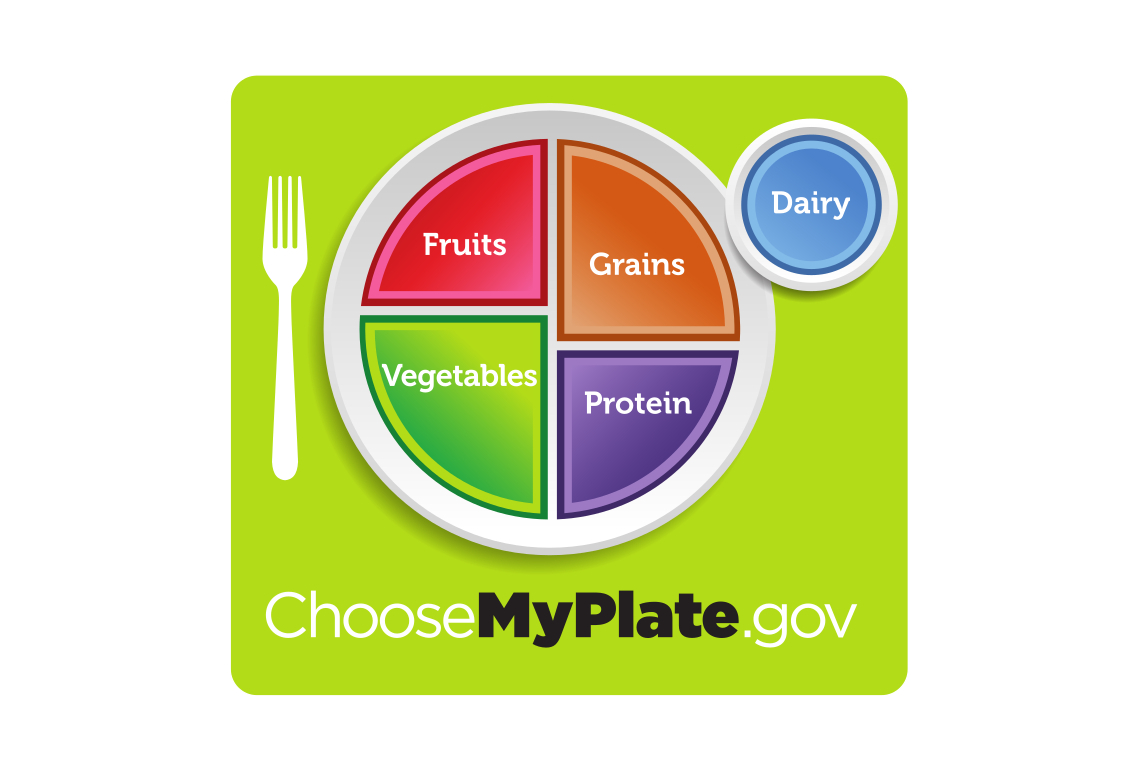ChooseMyPlate: Tools & Resources for Healthier Diet

The U.S. government's Dietary Guidelines for Americans offers recommendations on food and nutrition. The guidelines focus on ways to improve what Americans eat and to reduce certain health conditions that can be caused by poor diet.
The current guidelines, called the 2015-2020 Dietary Guidelines for Americans, were announced on January 7, 2016, and were unveiled along with new teaching visuals and a website called ChooseMyPlate.gov, which has tools and resources to help Americans implement the new guidelines. An advisory committee of researchers and scientists in the fields of nutrition, health and medicine had met for about a year to review and update the 2010 Dietary Guidelines, according to the American Medical Association.
"Protecting the health of the American public includes empowering them with the tools they need to make healthy choices in their daily lives," Secretary of Health and Human Services Sylvia M. Burwell said in a press release. "By focusing on small shifts in what we eat and drink, eating healthy becomes more manageable. The Dietary Guidelines provide science-based recommendations on food and nutrition so people can make decisions that may help keep their weight under control, and prevent chronic conditions, like Type 2 diabetes, hypertension, and heart disease."
Overall guidelines
The big difference between the old dietary guidelines and the new ones are that instead of focusing on food groups, these guidelines focus on healthy eating patterns overall.
According to the U.S. Department of Agriculture, five main tenets sum up the new edition:
- Follow a healthy eating pattern throughout life.
- Focus on eating a variety, nutrient-dense foods at an appropriate amount.
- Reduce sodium intake and limit calories from added sugars and saturated fats.
- Shift to healthier food and beverage choices.
- Support healthy eating patterns for everyone.
These five guidelines are further broken down into what Americans should eat to stay healthy:
- Consume variety of vegetables, including dark green, red and orange, legumes (beans and peas), starchy and other vegetables.
- Eat fruits, especially whole fruits.
- Eat grains, with at least half being whole grains.
- Include fat-free or low-fat dairy into a healthy diet, including milk, yogurt, cheese, and/or fortified soy beverages.
- Consume a variety of protein foods, including seafood, lean meats and poultry, eggs, legumes (beans and peas), soy products, and nuts and seeds.
- Include oils from plants such as canola, corn, olive, peanut, safflower, soybean and sunflower.
It also recommends some limits:
- A moderate caffeine habit is okay. The guidelines recommend drinking up to three to five 8-ounce cups of coffee per day or up to 400 milligrams per day of caffeine. (However, these guidelines are for those who already consume caffeine. If you aren't a caffeine drinker, the guidelines do not recommend starting.)
- Consume less than 10 percent of calories per day from added sugars.
- Consume less than 10 percent of calories per day from saturated fats. (The guidelines do not encourage a low-fat diet. According to the guidelines, 35 percent of total calories per day should be from fat.)
- Consume less than 2,300 milligrams (mg) per day of sodium for people over the age of 14 years and less for those younger.
The MyPlate Daily Checklist
Another change is the teaching visuals. Gone is the food pyramid; the new visual is a plate and cup that is divided into serving sizes. Also, the Daily Food Plan's name has changed to The MyPlate Daily Checklist.
Instead of general estimates of serving sizes, the new checklist offers what to eat and how much to eat within your calorie allowance, according to your age, height, sex, weight and physical activity level. The MyPlate Daily Checklist is fully customizable by imputing personal information into the MyPlate Checklist Calculator.
Once the calculator runs the information, it comes up with a suggestion of how many calories the user needs to eat to maintain or reach a healthy weight. It also offers an eating and exercise plan that can be printed out and used to track progress.
The ChooseMyPlate website has many other helpful features, such as a BMI calculator, daily eating checklist, preschooler growth charts, a pregnancy weight gain calculator and a SuperTracker. The SuperTracker helps users analyze, plan and track their diet and physical activity. It also offers virtual coaching, goal setting and journaling options.
Additional resources
Sign up for the Live Science daily newsletter now
Get the world’s most fascinating discoveries delivered straight to your inbox.











